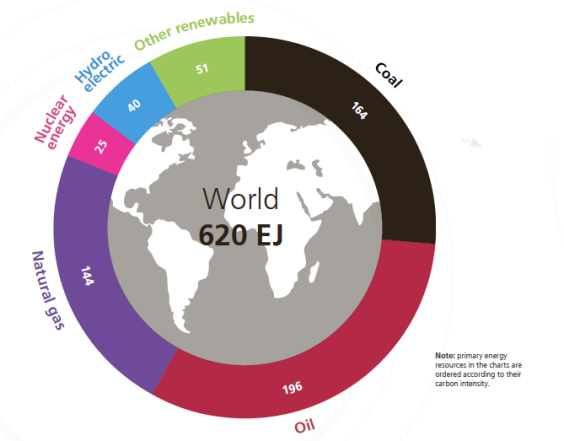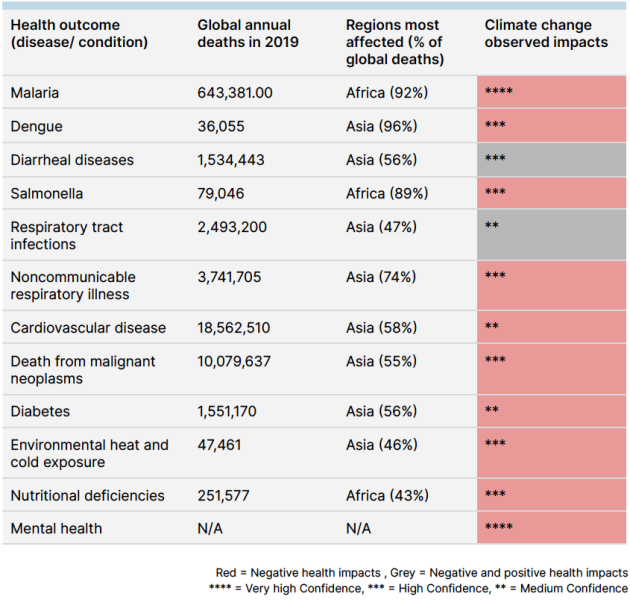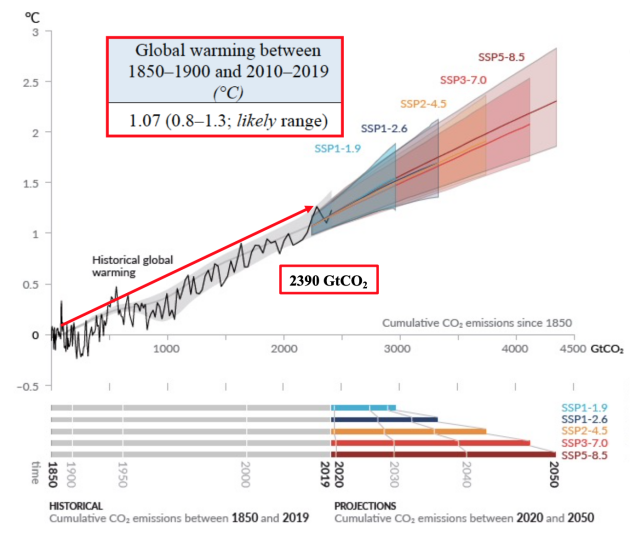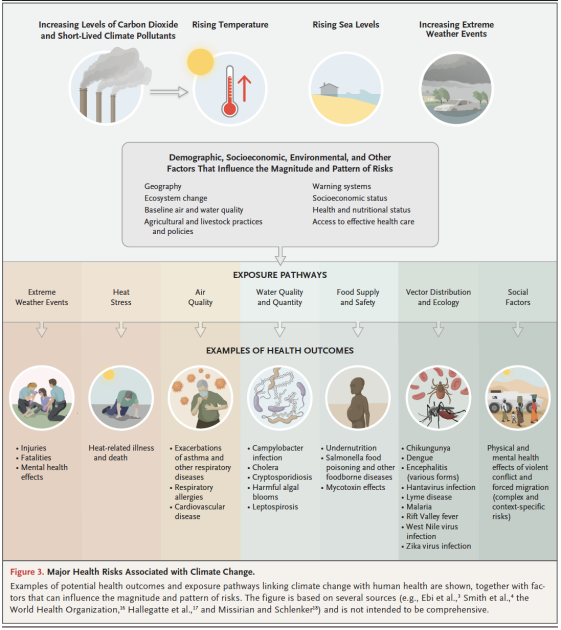Climate change
Human activity causing unprecedented climate change
Since the beginning of the industrial era, human activity have caused an rapid increase of the greenhouse gases in the atmosphere such as CO₂, CH₄ and N₂O. Those levels haven't been observed since thousands, even million of years. For example, in 2019, the concentration of CO₂, the greenhouse gas that comes from human activity the most, was the highest since 2 million years. This accumulation of gas reinforces the natural greenhouse effect , which is the main cause of global warming since the end of the 20th century.
In its latest report, the Intergovernmental Panel on Climate Change (IPCC) confirms with a high degree of scientific confidence that there is an almost linear relationship between cumulative man-made CO₂ emissions and the global warming they cause. In other words, every 1000 gigatonnes (Gt) of CO₂ emitted would lead to an increase of around 0.45°C in the average temperature of the Earth's surface. Between 1850 and 2019, humanity has thus emitted a total of 2390 (+/- 240) gigatonnes of man-made CO₂.
The climate system is therefore experiencing an unprecedented imbalance, leading to major changes in the atmosphere, oceans, polar ice and terrestrial ecosystems, all directly linked to the increase in global warming. This phenomenon is already having a visible impact on living conditions around the world. Here are a few concrete examples of these effects:
Rising global temperatures: Each decade of the last 40 years has been warmer than the previous one, a phenomenon unprecedented since 1850. In 2024, temperatures were 0.72°C above the 1991-2020 average, and 1.60°C above pre-industrialisation levels. This makes it the first year to exceed 1.5°C of warming compared with the pre-industrial period.
Intensification of extreme weather events: Heat waves, heavy rainfall, droughts, tropical cyclones and forest fires are occurring more frequently and more violently.
Rising sea levels: Warming oceans are expanding, and melting glaciers and ice caps are also contributing to rising sea levels. It is almost certain that this rise will continue throughout the 21st century, threatening the habitability of coastal areas and the survival of certain islands in the Indian and Pacific ocean
Ocean warming and acidification: These phenomena threaten marine biodiversity, affecting coral reefs and marine ecosystems that are essential to the food chain.
The threat to terrestrial biodiversity: Climate change is disrupting natural habitats, endangering many species and ecosystems, which are becoming increasingly vulnerable to changes in their environment.
These GHG emissions are produced by human activities such as transport, agriculture, industry, construction, energy production and land use change.
If we look at primary energy consumption around the world, it is rising steadily, with renewable energy sources and nuclear power adding to the use of fossil fuels to meet ever-increasing demand.
In its latest report for 2024, the Energy Institute shows that 2023 was a record year:
Energy production and consumption across all sectors, with most markets returning to at least their long-term pre-COVID trend of 2019. Consumption of fossil fuels (oil, coal and gas) still accounting for 81.5% of primary energy consumption.
Greenhouse gas emissions, which exceeded the record level reached in 2022. For the first time in history, energy-related emissions have exceeded the 40 GtCO2e threshold.

Climate change : a threat to global healthcare in the 21st century
Climate change, by disrupting the ecosystems on which we depend, poses a serious threat to the health of human populations. After nearly twenty years of research, the links between climate change and health are now clearly established.
Some of the impacts of climate change on health are immediate and direct, such as the rise in temperatures and the increased frequency of extreme weather events (heat waves, storms, floods). These phenomena can lead directly to death or injury, particularly among vulnerable populations.
However, many of the health problems associated with climate change are indirect, arising from its effects on: natural and social systems:
Natural determinants of health: Climate change is affecting air quality, reducing access to drinking water, reducing harvests and altering the distribution of infectious diseases. In the long term, these disruptions can have a detrimental effect on people's health.
Socio-economic determinants: Climate change exacerbates social inequalities. It limits access to healthcare, intensifies geopolitical conflicts, leads to mass migration and destabilises local economies. These socio-economic effects have a direct impact on public health.
The specific consequences for human health include :
Increased cardiovascular disease: More frequent heatwaves increase heat stress, which can aggravate heart problems and lead to an increase in cardiovascular mortality.
Exacerbation of respiratory diseases: Air pollution, exacerbated by extreme weather events, is a key factor in the aggravation of lung and respiratory diseases (such as asthma).
Changes in the distribution of infectious diseases: Climate change is altering the habitats of disease vectors, such as mosquitoes, and may increase the spread of zoonotic (transmitted from animals to humans) and vector-borne (transmitted by insects) diseases, as well as water-borne diseases linked to water contamination.
Food insecurity and malnutrition: Already endemic in several regions of the world, it is expected to expose more than 840 million people to undernourishment by 2030. Climate change threatens to exacerbate this crisis by affecting the quantity and quality of food produced by the agricultural, fishing and livestock sectors.
Impact on mental health: Extreme weather events and forced migration can cause major psychological stress, aggravating mental and emotional disorders such as anxiety, depression or post-traumatic stress disorder.
Climate change: harmful effects that are already observable and increasing
Climate change is already affecting human health and well-being in every region of the world.
For example, from 2000 to 2018, heat-related mortality among people over 65 increased by 53.7%, reaching 296,000 deaths in 2018.
According to the IPCC report, there are 11 categories of diseases and health effects that are influenced by climate change, known as climate-sensitive diseases. In 2019, these climate-sensitive diseases accounted for around 69.9% of deaths worldwide. Of these, cardiovascular diseases were the most common, accounting for 32.8% of deaths worldwide. The vast majority of climate-related health impacts are negative, as the figures below show.


